Space and time are as relative as anything else
Required:
Special Relativity is a theory by Einstein that explains how space and time operate differently than we would think.
Frames of reference
Suppose you are riding in a train and you drop a ball. For you, the ball falls straight down, but for someone standing outside of the train on the platform, the ball falls in an arc:
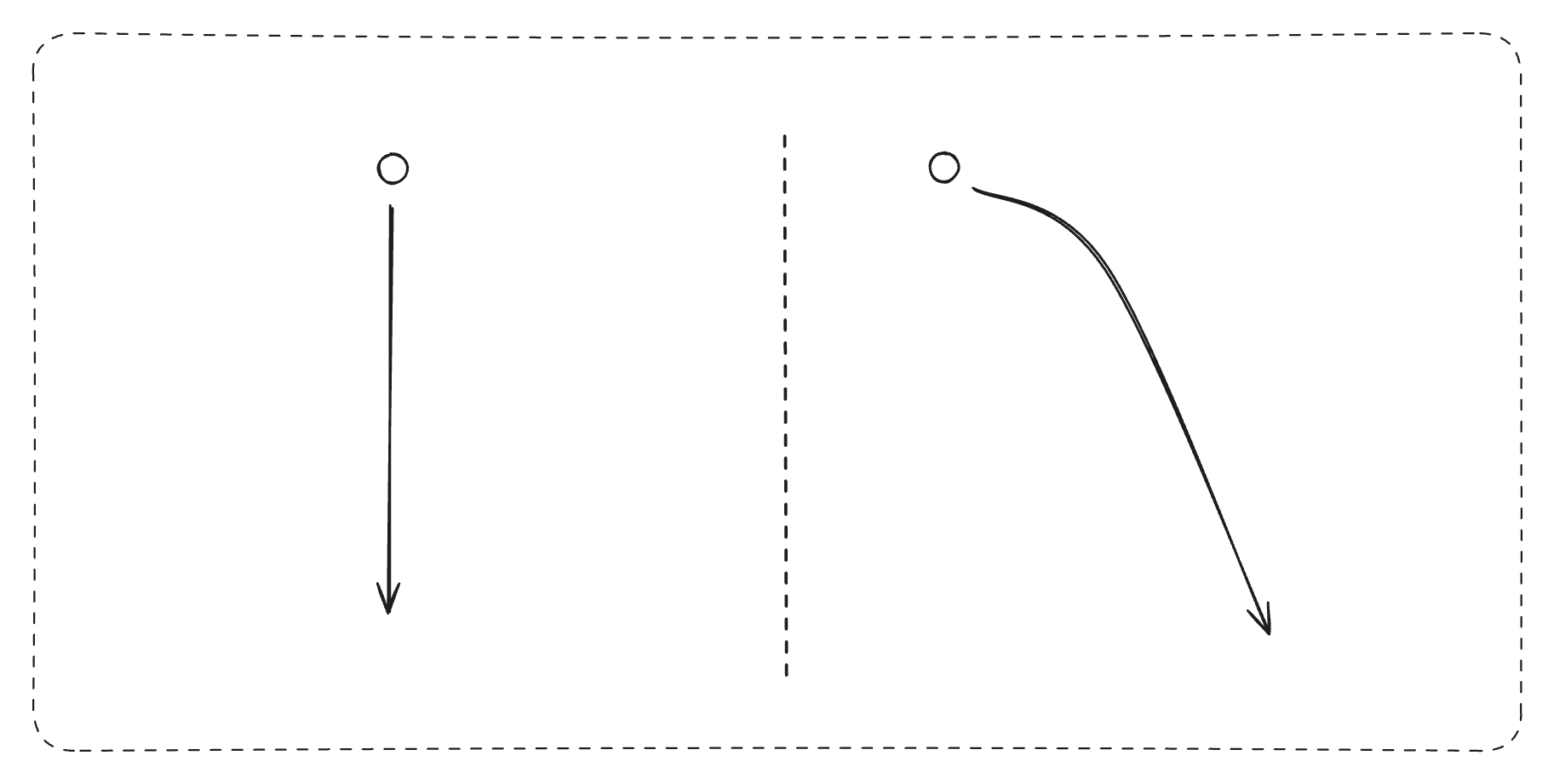
So a question arises: What is the objective path of the ball?
Is its path straight, or is it curved?
The only way to answer the question is relative.
Relative to a system of coordinates that is rigidly attached to the train, it falls straight. But relative to a coordinate system that is attached to the ground, it fell in an arc.

In other words, there is no such thing as an independently existing path, only a path relative to a particular frame of reference.
This is the Principle of Relativity.
Inertial Frames
The Principle of Inertia states that an object will continue in a state of rest or motion in a straight line unless acted on by an outside force.
Thus, a frame of reference that follows this principle is called an inertial frame of reference. Another way to put this is that the frame of reference in non-accelerating.
This is the reason that special relativity is special - it only deals with inertial frames of reference, such as one attached to a train moving at a constant speed in a straight line.
Dropping a ball on a moving train will fall straight down, in exactly same way as dropping a ball on the platform.
The frame is moving with the ball, so physics behaves the same relative to it.
Applied in more general sense, you can assume that the laws of physics will behave exactly the same in all inertia frames of reference.
Summation
Let suppose now that you are walking through the train at velocity z while the train travels at velocity w.
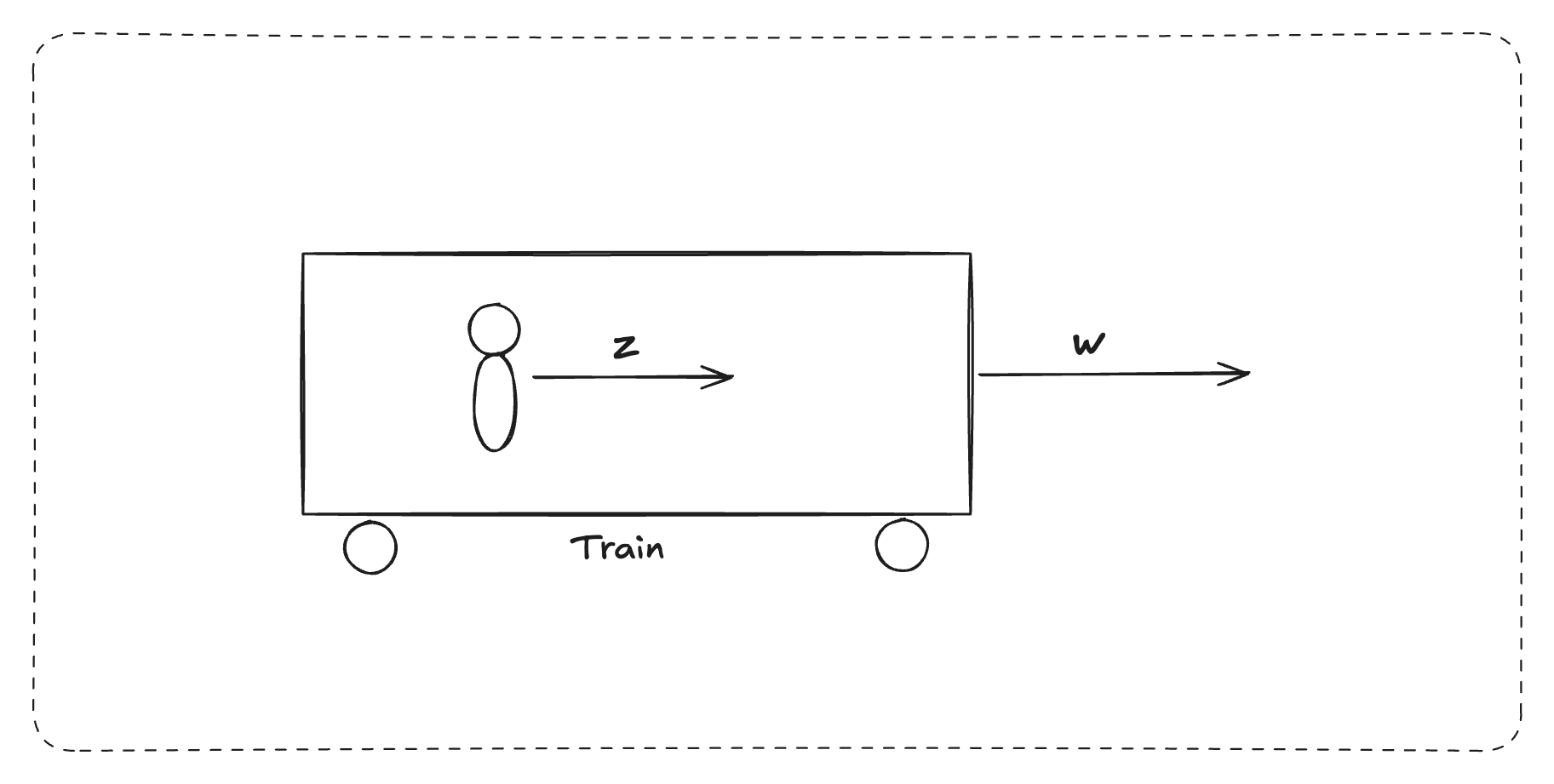
To someone on the platform, you would be moving at the velocity v = z + w.
This is the sum of your velocity within your frame of reference and the velocity of your frame of reference relative to the observer’s frame.
The Issue with Light
Lets do the same experiment, now with light inside of the train. If we measure the speed of light inside the train, it is c.
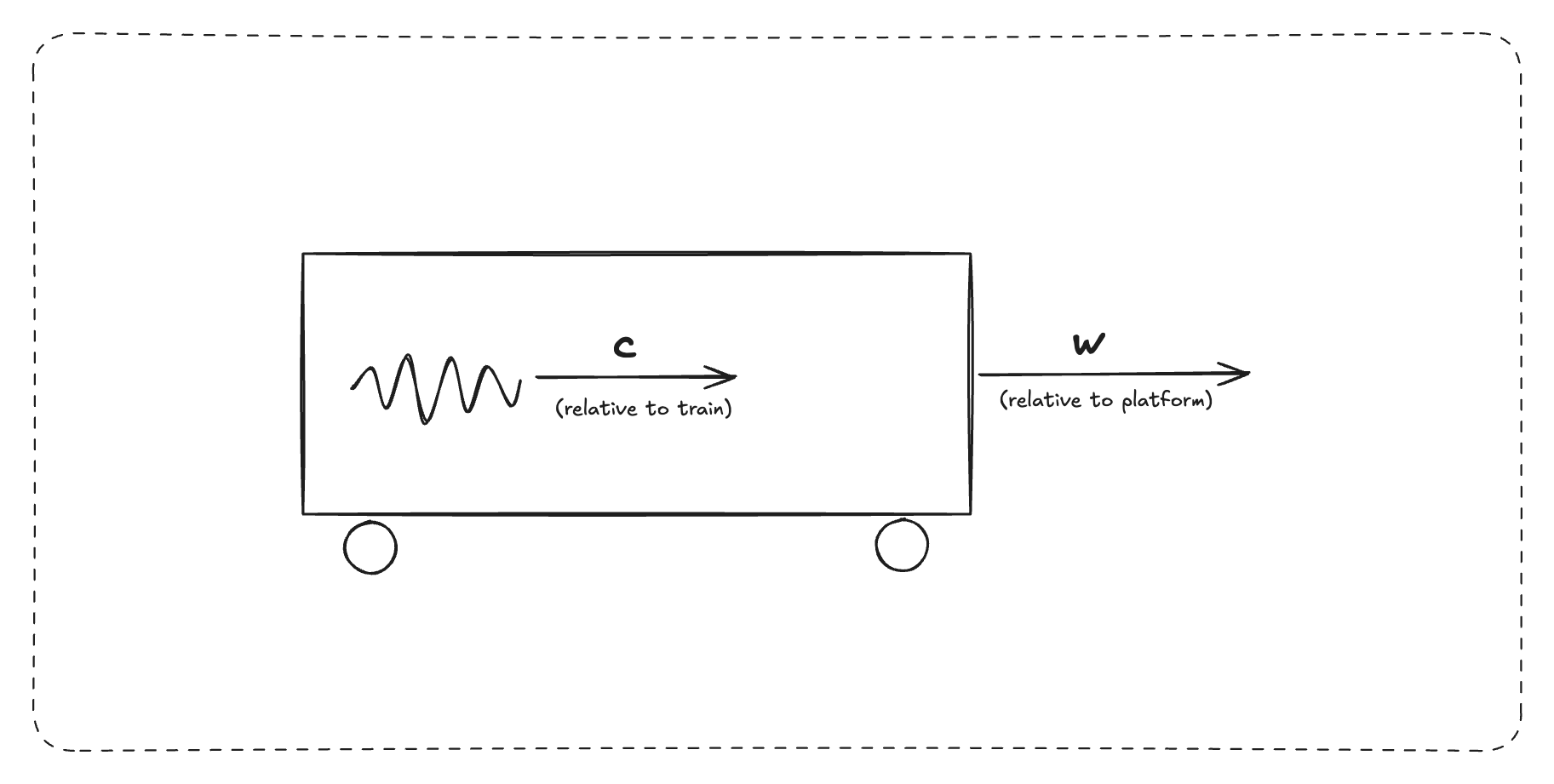
So, on the platform we would expect to measure the light moving at v = c + w.
However, this is impossible, as nothing can travel faster than c - the speed of light, which is limited by Causality.
Even on the platform, we still measure the light moving at exactly c*.
Let’s visualize this in another way. When you drive on the road next to another car you notice a relative speed between the two cars. If you are traveling at 40 kph, and someone passes you going 50 kph, you will see the other car moving at a relative speed of 10 kph.
Now imagine you are on a spaceship flying at 200,000 kph, and get passed by a ray of light traveling at c, approximately 300,000 kph. You would expect to see the light moving past you at 100,000 kph. This does not happen, you instead still see the light moving at 300,000 kph from your spaceship.
*When we measure the speed of light, it is always exactly the same no matter the frame of reference. In other words, the speed of light is not relative.
How could this possibly be true?
Perception
Einstein realized that the only way that a person standing still and a person moving could measure the same speed of light is if their perception of space and time was not the same.
For our example above, you could say that relative to the spaceship, the light is moving at “300,000 spaceship kilometers per spaceship second”, an on the ground it moves at “300,000 ground kilometers per ground seconds”.
Lets explore how it’s possible for someone’s measure of space and time to be different to someone else who is in relative motion.
Time Dilation
Lets create a very simple clock by positioning two mirrors 1 meter apart. If we send a light beam to bounce between the two mirrors, when it goes up that is a ‘tick’ and when it comes down it is a ‘tock’
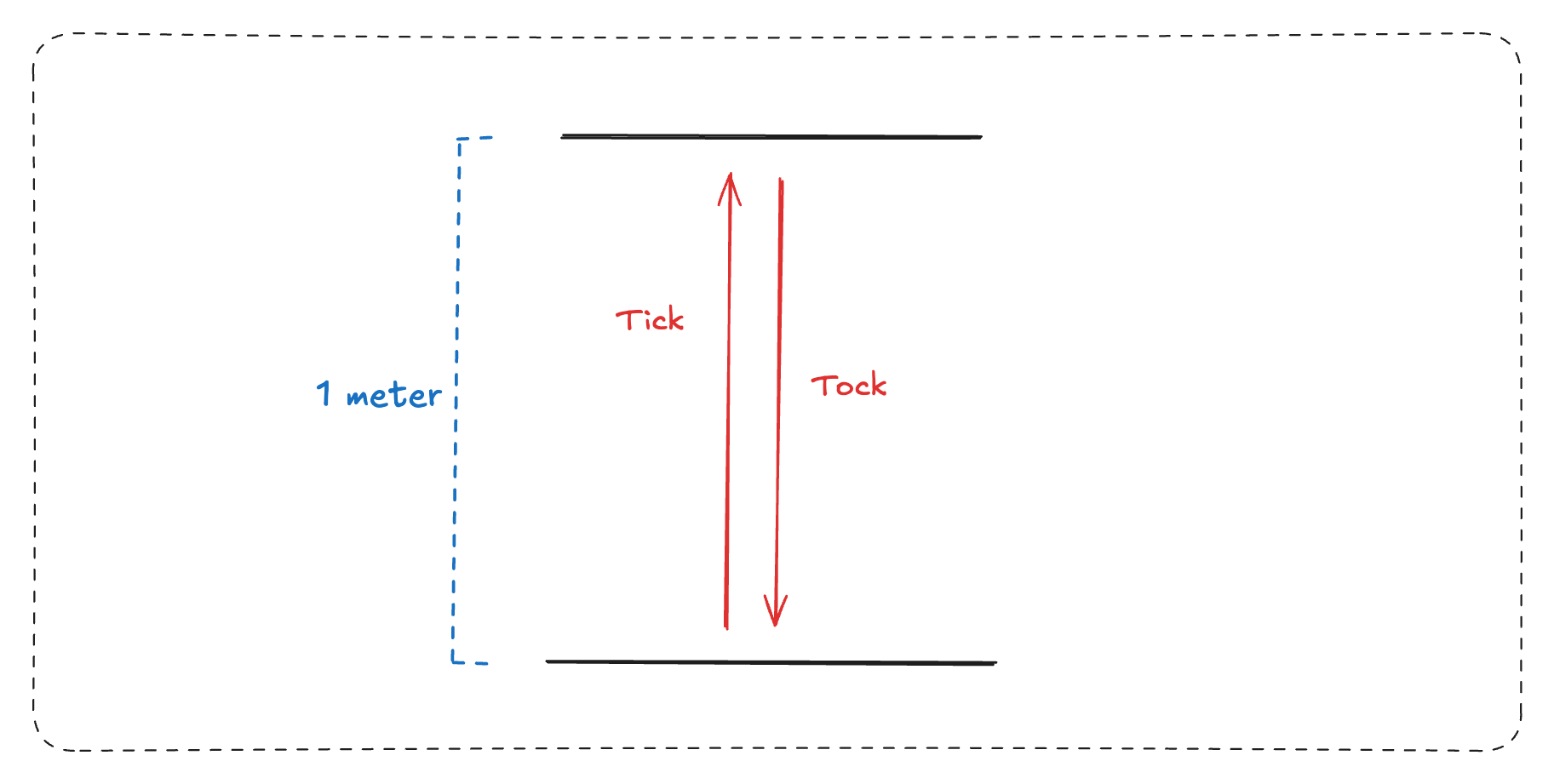
Since we know speed = distance / time, we also know that time = distance / speed. The time for one ‘tick-tock’ in this non moving frame is 2 / c.
Let’s put this clock on a spaceship traveling close to the speed of light and measure a tick tock. Since the mirrors are moving with the ship, the path taken by the light is now different
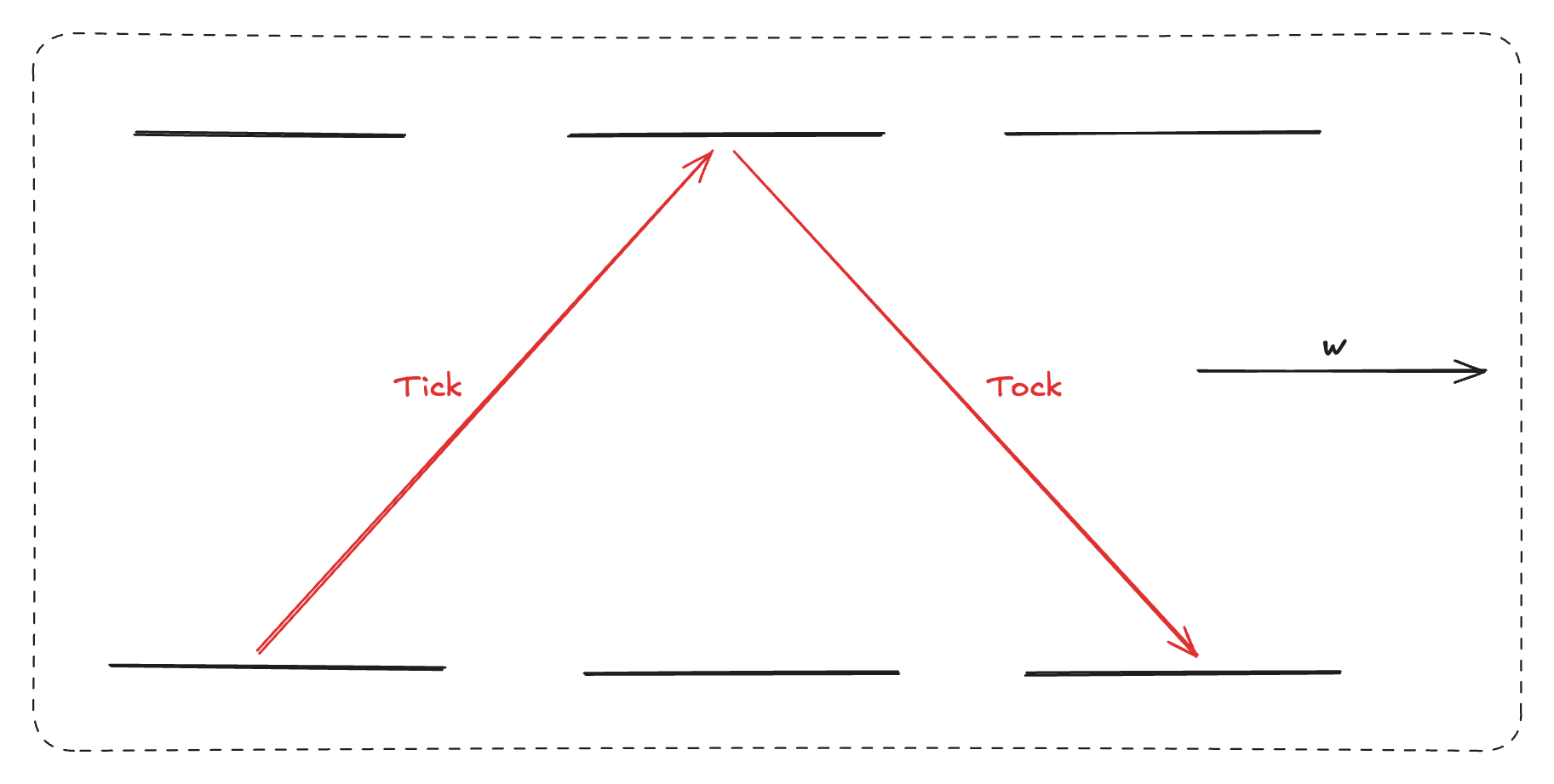
To make sense of this diagram, understand that the positions of the 2 mirrors are moving to the right at speed w in the duration of the tick-tock. The light now travels in a zig-zag from an outsider frame’s perspective
When we measure the distance the light traveled, it has travelled a further distance than with the stationary mirrors.
This means the duration of the tick tock is longer when viewed from an outside frame. From inside the ship, the light still moves straight up and down between the mirrors - the clock ticks as normal.
Stopping Time
As the reference frame approaches the speed of light, The angle of this zig-zag will approach zero. The light will move closer and closer to being parallel with the mirrors. Once the speed of light is reached, the light will never reach the other mirror.
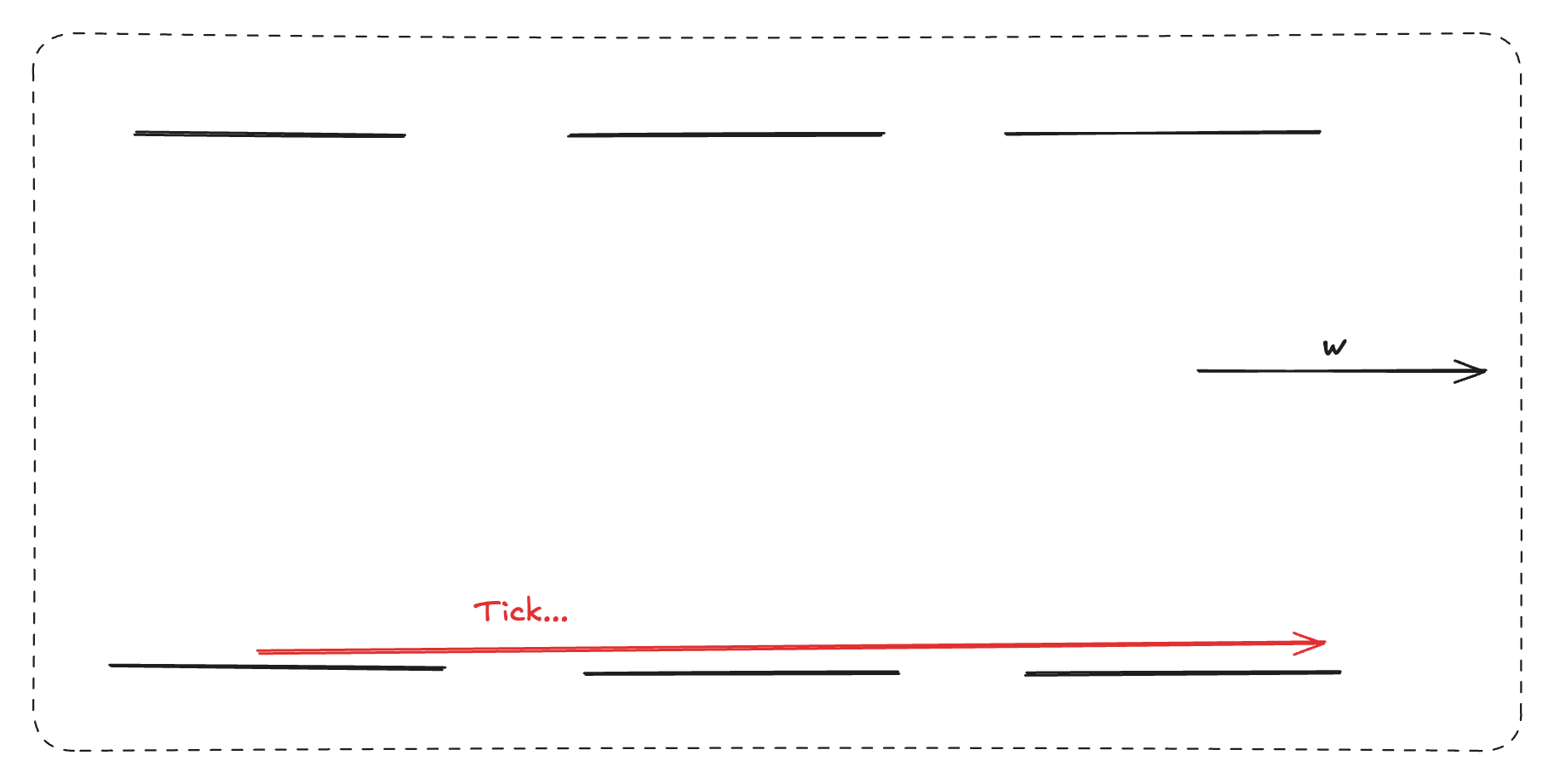
The distance the light needs to travel approaches infinity. The clock stops ticking.
Simultaneous Events
Let’s do another experiment where we imagine someone standing in the center of a spaceship moving close to the speed of light. He has 2 flashlights and shines one toward the front of the ship and one towards the back.
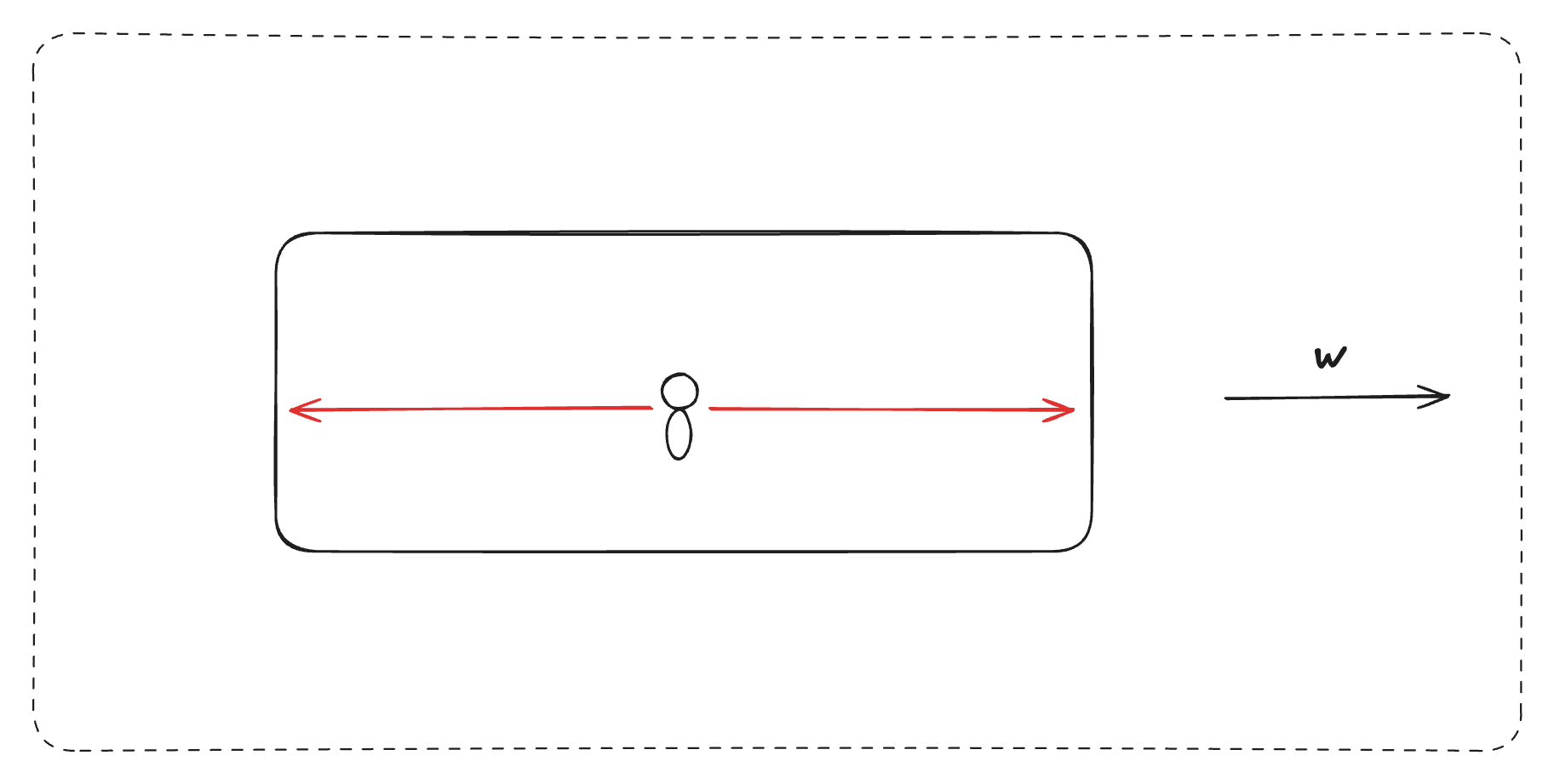
From the perspective of being inside the spaceship, the light will reach both ends at exactly the same time.
However, from outside of the ship we see something different.
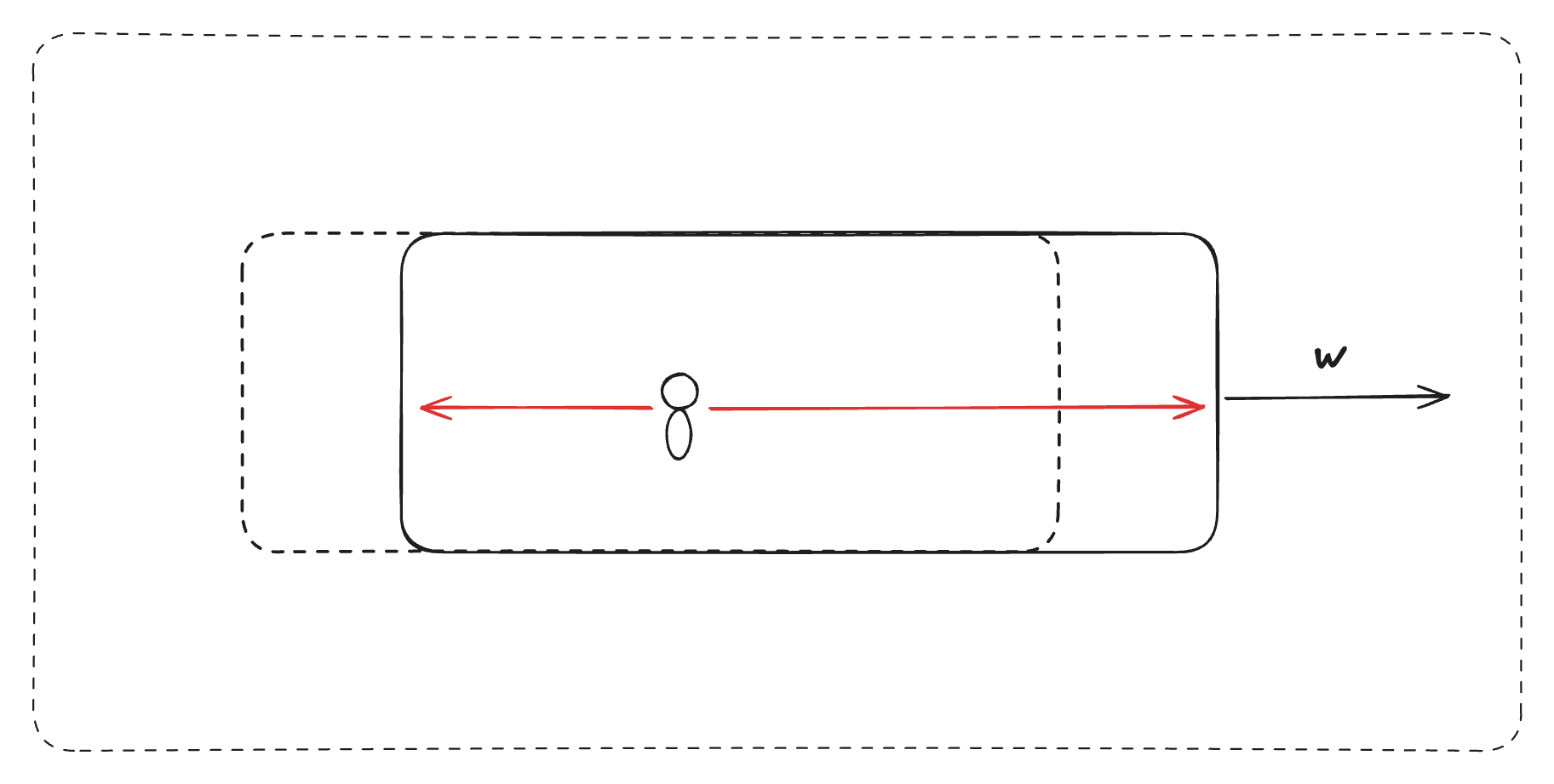
The ship will have moved in the time it takes the light to travel, The light beam going to the front of the ship traveled a further distance than the one going to the back. The light hits the back before it hits the front, even though these events from inside are simultaneous.
This means that from a stationary perspective, the back of the ship is slightly in the future and the front is in the past. The front of the ship lags in time when compared to the rear.
This means a clock in the center of the ship could read 12pm, while at the front it is still 11am and at the back it is 1pm. To the person inside the ship, all three clocks still read 12pm. It is the act of observing from an outside frame that desynchronizes the clocks.
Length Contraction
Because the front of the ship is in the past, it will be located behind where it is supposed to be. And since the back is in the future, it will be slightly ahead of where it is expected.

Think about where the front would have been 1 second ago, and where the back would be one second in the future.
This will make the ship appear shorter in length from the outside frame. As objects approach the speed of light, their length contracts to zero.
Since frames are relative, the same effect applies to when we view the outside universe from inside of the spaceship. From inside, the spaceship looks normal and it is the outside universe which contracts in length perpendicular to the direction of travel. In this frame it is not the spaceship which is moving, but the universe.
At the Speed Limit
When we look at the universe from the perspective of a photon traveling at the speed of light, we can see that it experiences no time and the universe is contracted to have no distance.
In this way it is at every point along it’s path simultaneously.
Special Relativity shows that there is no objective frame in which to view our universe. Things that appear to be solid foundations - space and time - are just as relative as everything else.
While Special Relativity explains effects in non accelerating inertial frames of reference, Einstein expanded on this with General Relativity which includes accelerating frames and their effects through gravity.